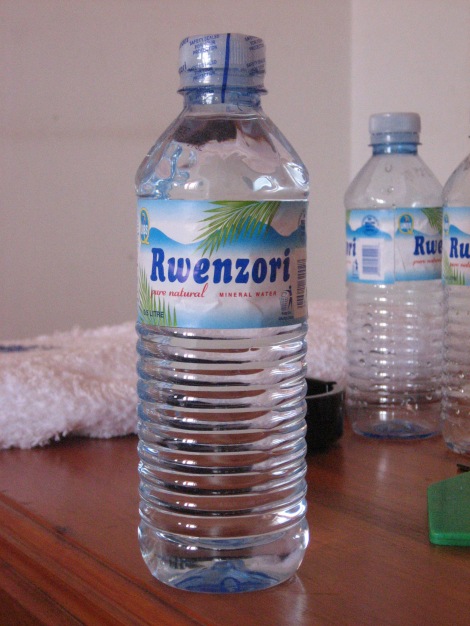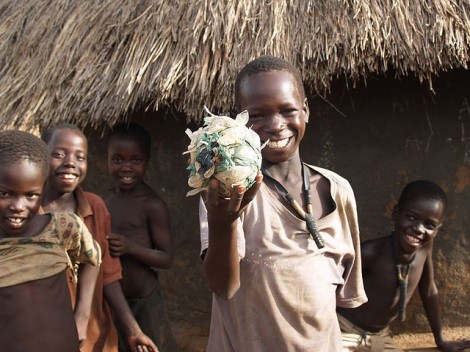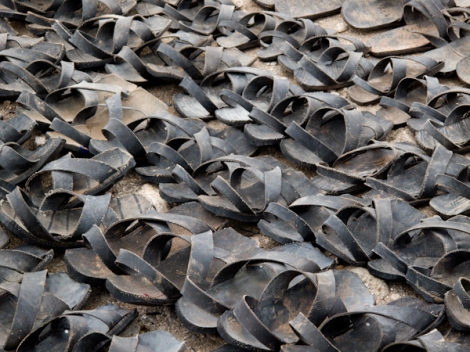Uganda has a dearth of trash cans. I say this, because, as a foreigner traveling through the country, I was strongly encouraged to to avoid drinking tap water. Instead, our option for water was either boiled or bottled. I remember chugging one of my first bottles of water, after a long, hot day in the sun, and then looking around for a place to put it. Nothing. Nada. Zero. In fact Kampala, the capital city, has one lone trash can in the middle of downtown, usually empty, with bits of trash swirling around it. Having relatively been introduced to plastics and non-biodegradable packaging, Uganda has neither the infrastructure nor the cultural norms yet for adequate trash disposal. And so I would often find myself lugging around a bunch of empty bottles in my bag, along with other random bits of trash, looking for a trash heap on which to throw them. Near the end of my time in Uganda, I am embarrassed to admit that I would sometimes do as the locals did: simply toss the bottle or bit of trash to the side of the road. There was just no where else to put it.
One day, as I stood poised with empty water bottle in hand, pondering what to do with it, a young man approached me, and excitedly asked for it. Surprised, I gave it to him, and he left with a big grin on his face. Later, a Ugandan friend informed me that empty water bottles are very valuable to some Ugandans, who reuse or sell them as multipurpose containers: They use them to put homemade juice to sell, to store paraffin, or a multitude of other things which they either sell or keep for themselves. Later, as our group of volunteers prepared to return to the United States, we invited the locals to our apartment, where we pulled out 3 months worth of small and large empty water bottles. You should have seen the look on their faces! To them, these bottles were more than bottles–they represented a treasure trove of possibility.
Some of the other “trash to treasure” I noticed in Uganda: Old tires are fashioned into soles of shoes; fabric scraps on the floor of a tailor are used to stuff pillow and cushions, trash bags are used to make homemade soccer balls, and (this is the most well-known to Americans) old posters and magazines are cut and rolled into beautiful beads.
Necessity is the mother of invention, and can certainly produce unexpected beauty and creativity. In Uganda, I saw countless examples of one man’s “trash” becoming another’s “treasure” (or business opportunity). This was more than just a fun hobby, it was (and is) about survival. Ingenious Ugandans saw financial value in things that others would merely toss to the side of the road.
But is necessity and the survival instinct the only factor in considering value? Are possible financial opportunities the only gain? What other reasons do people find value and worth in things that others might throw or give away? A creative drive; a dislike of following “the norm”; the pleasure of making something from “nothing”, or possessing a certain aesthetic for the unique, the peculiar, and the re-purposed. All of these could be factors, or maybe a combination of many. Do you have to be an “artist” to appreciate “trash”, and does it go both ways: do those who see beauty in “trash”, distain the cultural ideas of “treasure”?
Salem, Massachusetts is a long way from Uganda, and yet the recycled, up-cycled, and repurposed movement is alive and well here. A few months ago, Beth wrote about an artist Thomas Mackey who makes art out of recycled tools and machine parts. One of my first posts was about the non-profit organization in Lynn, Extras for Creative Learning, a bulk supply for art teachers, artists, and crafters. They accept donations from stores, factories and others who need a place to dump all their leftover scraps.
A few weeks ago, Marta and I attended an art opening at the Scarlet Letter Press, and met artist Jeff Bowie, who creates exquisite jewelry out of broken clocks.
Thrift stores and consignment shops are booming. Trends are constantly changing and evolving. What will become the new “trash” and the new “treasure”?
This month we will focus on this growing trend (or is it just a re-emerging of a natural tendency) towards reuse and re-purpose. We will explore our own values of “trash” and “treasure”, and consider how cultural and societal changes can affect the value and worth of popular opinion and norms (remember, at one time even mullets were considered attractive).
What about you? Are there some things you value that most others don’t? What makes something your “trash” and another thing your “treasure”?
Hope you will enjoy this month with us!
–Madelene





Very interesting post, and beautiful pictures!
Thanks Joy!